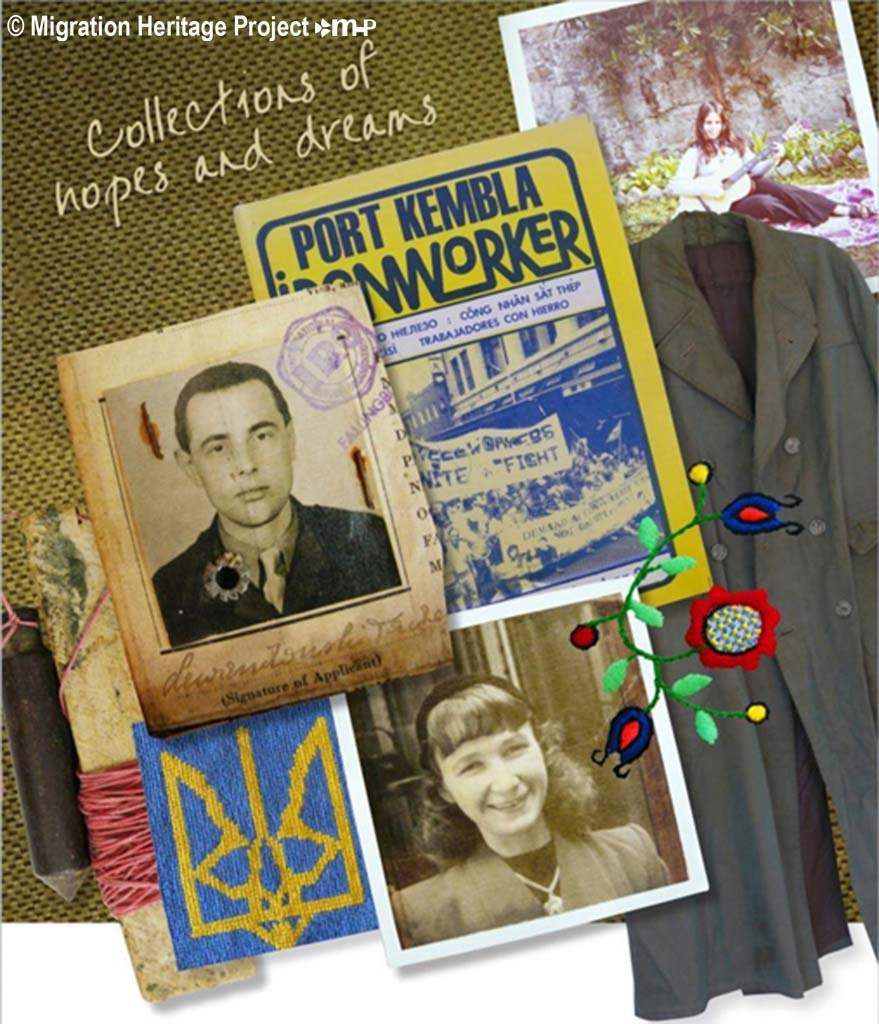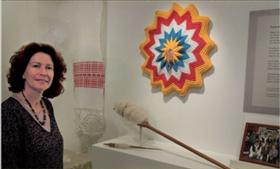Collections of Hopes and Dreams: objects and stories connecting generations of migrants was an exhibition by the Migration Heritage Project that was held in the Wollongong City Gallery from 19 November 2011 to 4 March 2012 and was Curated by Eva Castle.
The Collections of Hopes and Dreams Exhibition provided for many residents a significant personal reality, in a regional gallery exhibition – a life of dispossession and dislocation arising from World War 2, or growing up in families that experienced the Second World War in Europe.
Porcelain, handicraft, poetry and biography, photographs, clothing, domestic artefacts, work papers, travel and government documents, souvenirs and collectibles, machinery, furniture, tools, and historical research were brought together in a visual and lyrical exploration that was uniquely personal, and at the same time universal.
Visually striking pieces included two home-made workbenches – one a working artefact and the other a ‘masterpiece’ of joinery skills intended only for display; and handcrafts such as the blending of Croatian and Australian colours in a star pillow crocheted for the 2000 Olympics, reflecting a bi-cultural reality that often appears unintelligible.
The exhibition was a contrast in style and content to a parallel exhibition being held at the same time called Generations, with works commissioned by the gallery from Australian artists with an experience of dislocation and migration. The theme of adjustment and perspective arising from reflection was explored in both exhibitions.
Collections of Hopes and Dreams was held in the ground floor Mann-Tatlow Gallery, with large glass-enclosed cases that lined the walls, and as well as a central freestanding display. The objects were supported to be clearly visible, and grouped to create a personal storyline or motif, fitting into an overall sequence that was gently drawn for the viewer.
The exhibition began with a Ukrainian collection that featured a tapestry. The tapestry a ‘talisman’ connecting parent and child and a symbol of the intangible connection between the Ukrainian Diaspora and their landscape and colours of fields and sky, in a symbol of national freedom, experienced briefly between the first and second World Wars. This period of freedom was all the more precious in the national psyche because of the depths of despair that followed in the Great Depression, the Holodomor and World War 2.
The associated embroidery pillows and hand-decorated Easter eggs were, like other objects in the exhibition, examples of how each generation recreates aspects of their past – in this case through a handcraft tradition – making an emotional connection that may be an homage, an act of hope or of love.
The curatorial objective was to present the voices of individuals and items from their collections and households, to explore their aspirations and motivations, from childhood to the present. The period covered was from the late 1940s to the 1980s. The beautifully presented exhibition touched the gallery viewer through its simplicity, the statements of individuals, and the force that resided in the object and its associations. The fourteen participants included men, women, a couple, and Australian-born children. The countries of origin represented were Croatia, Germany, Hungary, Poland and the Ukraine.
The Wollongong City Gallery is to be congratulated for developing the exhibition in collaboration with the Migration Heritage Project Inc, “It was important to the Gallery and MHP that an exhibition of this type would help stimulate us to examine and challenge our understandings of the power of everyday hopes and dreams – our universal aspirations for happiness, freedom of expression, the right to work, education, and safety.”
The curator was Eva Castle, a founding member of the Migration Heritage project. Eva and the MHP gratefully acknowledges contributions of Louise Brand (Wollongong City Gallery Curator) to in-display design and layout, managing the installation, providing object supports and creating the exhibition lighting; Vivian Vidulich, Mark Dalla Pozza and Gregor Cullen for exhibition design concepts and large format content production and the assistance of the Multicultural Communities Council of Illawarra and the NSW Migration Heritage Centre NSW with contacting individuals and two interviews previously conducted for the Belongings project.
A book about the exhibition was developed, as well as a complete record of the exhibition for the Wollongong City Library. The exhibition publication was supported by the NSW Migration Heritage Centre and produced by Eva Castle and Gregor Cullen for the Migration Heritage Project. The photographic record of the exhibition was supported by Friends of Wollongong City Library, photographed by Bernie Fischer and coordinated and produced by Eva Castle for the Migration Heritage Project.




